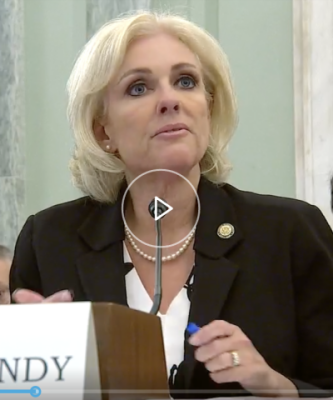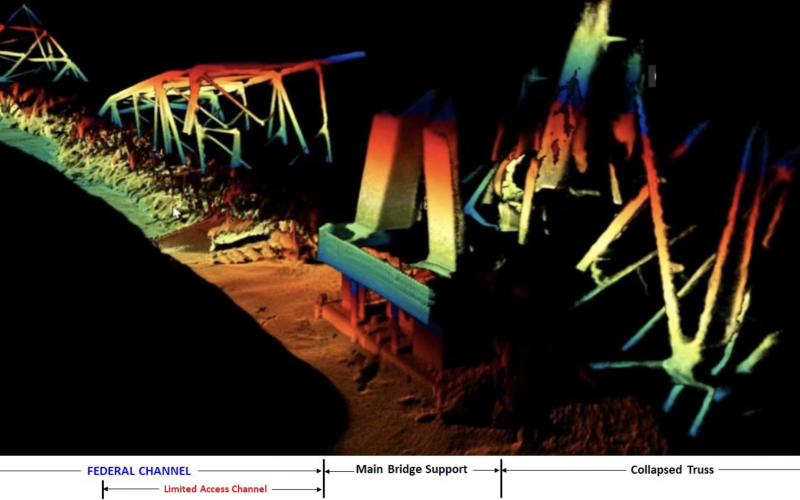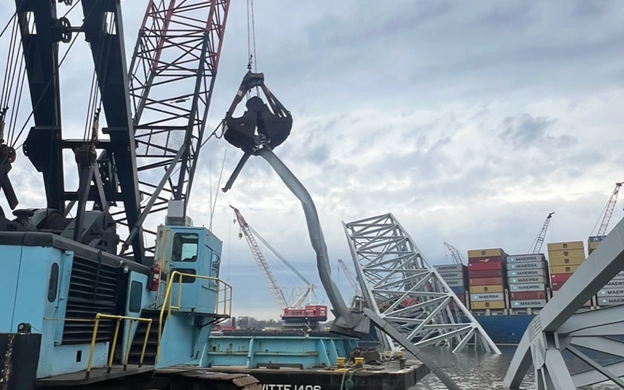A flotilla of salvors using massive crane barges continued to lift shipping containers and debris off the 985’ containership Dali, as National Transportation Safety Board investigators continued to interview witnesses to the March 26 allision that took down Baltimore’s Francis Scott Key Bridge.
“Most people don’t realize we’re still on the scene,” NTSB Chair Jennifer Homendy told members of the U.S. Senate Commerce, Science and Transportation Committee during a hearing Wednesday on Capitol Hill. Homendy said investigators have interviewed the two local pilots who were on the Dali as it departed the port, the ship’s master, officers and other crew members, Coast Guard watchstanders, and tugboat captains.
Investigators are working with experts from Hyundai, the South Korean company that built electrical equipment used in the Dali’s engine room. They are examining the system’s circuit breakers and data, and Homendy said power issues are a primary focus of investigators.
Homendy noted that that could change as more information comes in. She said a preliminary report is not expected before early May.

Video images of the Dali approaching the bridge show the entire ship apparently blacking out as it closed, the lights flicking back on, and black smoke belching from the ship’s exhaust before impact with a bridge pier shortly before 1:30 a.m.
With the ship’s course uncontrolled, a pilot on the Dali broadcast a warning that led to Maryland police blocking traffic on the bridge approaches before the collapse. But six construction workers making repairs on the bridge deck perished in the collapse.
In an April 11 update the joint command for the Key Bridge response reported that about 38 containers had been removed, a step toward moving the Dali. Removing the containers allows access to take pieces of the bridge off the ship’s bow.
“In parallel, wreckage and debris removal continued at the site, including breaking up of submerged roadbed from span 19, and the removal of a section of span 17. The rubble and debris have been taken to Sparrows Point, Maryland for processing and recycling,” according to the joint command statement. “While marine traffic is still limited, 69 vessels have transited through since the creation of the temporary alternate channels.”
“There has been incredible progress this week towards our goal to open the limited access deep draft channel,” said Col. Estee Pinchasin, commander, of the U. S. Army Corps of Engineers Baltimore District.






